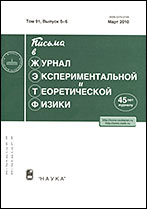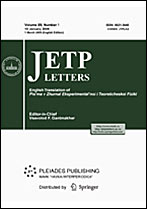|
This article is cited in 4 scientific papers (total in 4 papers)
BIOPHYSICS
Percolation transition in active neural networks with adaptive geometry
F. D. Iudinab, D. I. Iudinab, V. B. Kazantsevab
a National Research Nizhni Novgorod University, pr. Gagarina 23, Nizhni Novgorod, 603950, Russia
b Institute of Applied Physics, Russian Academy of Sciences, ul. Ul'yanova 46, Nizhni Novgorod, 603950, Russia
Abstract:
A mathematical model has been proposed for a neural network whose morphological structure varies dynamically depending on activity. This is the property of the so-called structural plasticity typical of developed neural systems of a brain. It has been shown that the spontaneous generation and propagation of a signal in such networks correspond to a percolation transition and the appearance of the connectivity component covering the entire system. Furthermore, adaptive change in the geometric structure of a network results in the clustering of cells and in the reduction of the effective percolation threshold, which corresponds to experimental neurobiological observations.
Received: 28.11.2014
Revised: 12.01.2015
Citation:
F. D. Iudin, D. I. Iudin, V. B. Kazantsev, “Percolation transition in active neural networks with adaptive geometry”, Pis'ma v Zh. Èksper. Teoret. Fiz., 101:4 (2015), 289–293; JETP Letters, 101:4 (2015), 271–275
Linking options:
https://www.mathnet.ru/eng/jetpl4560 https://www.mathnet.ru/eng/jetpl/v101/i4/p289
|


| Statistics & downloads: |
| Abstract page: | 219 | | Full-text PDF : | 65 | | References: | 51 | | First page: | 14 |
|





 Contact us:
Contact us: Terms of Use
Terms of Use
 Registration to the website
Registration to the website Logotypes
Logotypes








 Citation in format
Citation in format 
